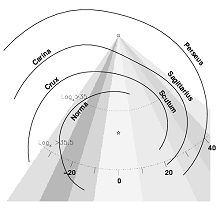Missions Update
3 January 2005
Cassini-Huygens
On 25 December at 02:00 UTC the Huygens spacecraft successfully separated from the Cassini spacecraft and began the final stage of its journey towards Titan. Huygens will remain dormant until the onboard timer wakes it up just before the probe reaches Titan's upper atmosphere on 14 January 2005. The relay of data from the probe to the orbiter will start when Huygens reaches an altitude of 1270 km above Titan's surface. More details on the descent are available here.
Following the separation, the Cassini spacecraft successfully performed a getaway manoeuvre on 27 December 2004, to keep it from following the Huygens probe into the atmosphere of Saturn's moon Titan. This manoeuvre established the required geometry between the probe and the orbiter for radio communications during the probe descent. Huygens has no navigating capability, so the Cassini orbiter had been placed on a deliberate collision course with Titan to ensure the accurate delivery of the probe to Titan.
To finish the year the Cassini spacecraft then executed a flyby of the mysterious moon Iapetus.
Integral
Integral has devoted a large fraction of the available observation time to the Galactic center region resulting in some new insights on the inner Galaxy arms (Norma, Scutum, Sagittarius). In a paper submitted to Astronomy and Astrophysics, Lutovinov et al. discuss the density of High Mass X-ray Binaries (HMXB) towards the Galactic centre. Since Integral observes in the hard X-ray band it has an increased sensitivity to absorbed sources, resulting in a larger sample of HMXB's.
 |
|
Diagram of the number density of HMXB in the inner Galaxy |
However the maxima in the HMXB density do not coincide exactly with the current position of the spiral arms. Lutovinov et al. argue that the highest density of HMXB is found where star formation was taking place about 10 million years ago.
Credits: A. Lutovinov (IKI Moscow) et al.
SOHO
More than 60 improved movies have been added to the archive on the SOHO Space Operations Centre webpages. They can be viewed at http://sohowww.estec.esa.nl/bestofsoho/Movies/movies2.html
Hubble
A calendar for 2005 is available showing 12 of the most spectacular images from the Hubble Space Telescope. It can be viewed and downloaded at http://spacetelescope.org/bin/calendar.pl?string=2005.
